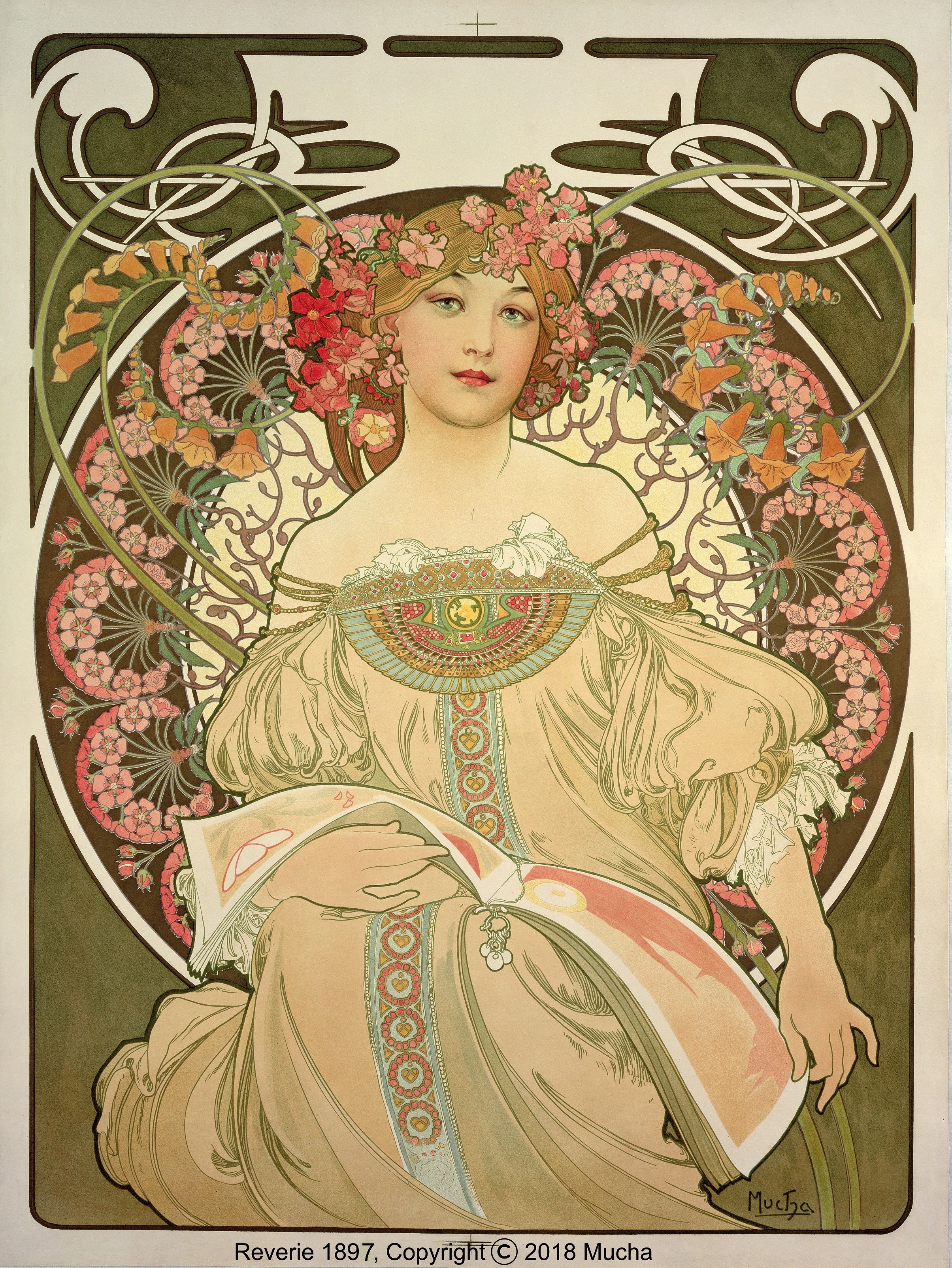Over 80 works of one of the greatest Art Nouveau artists, Alphonse Mucha, will grace the wonderful 18th century halls of Palazzo Pallavicini. Czech artist, 27 of which are exhibited for the first time in Italy.
Alphonse Mucha, the Czech artist (1860-1939) was one of the most celebrated and influential artists fin-de-siècle, Paris, known to most people for his graphics, especially theatrical posters of the 'superstar' actress Sarah Bernhardt and the photos he shot of elegant and attractive women for advertising. Mucha created his own well-defined style - the Mucha style - characterised by harmonious compositions, sinuous shapes, references to nature and neutral colours, which became synonymous with the emerging decorative style of the Art Nouveau period.
Despite the powerful impact of his style, little is know about what influenced him. This exhibition, examines the theoretical aspects of his works, especially the concept of beauty: the focus of his art.The exhibition includes three thematic sections: Women - Icons and Muse; Le Style Mucha - A Visual Language and Beauty -The Power of Inspiration.
Women - Icons and Muse, opens with Gismonda, the first poster designed by Mucha for Sarah Bernhardt. In his representation of the greatest French actress of the period, the Czech artist transforms the "divine Sarah" into a Byzantine goddess. The poster received immediate acclaim when it appeared on Paris posters on January 1, 1895. Its visual impact - with its elegant elongated shape and the delicate pastel tones that made the actress' image sublime and her balance between simplicity and detail, was impressive in its originality.
Delighted by the success of this manifesto, Bernhardt offered Mucha a contract to produce the stage sets and costumes, as well as all the posters for her theatre performances. During this contract, which went from 1895 to 1900, Mucha produced six more posters for Bernhardt's performances, including La dama delle camelie (1896), Lorenzaccio (1896) and La Samaritana (1897).
The success of the Gismonda brought numerous commissions to design advertising posters, including those for famous brands like JOB (cigarette paper), Lefèvre-Utile (biscuits) and Waverley (American bicycles). The second section is titled Le Style Mucha - A Language Vis
Mucha returned to his homeland in 1910 to realise his dream of actively working for the political freedom of his country, a commitment that culminated in his work of art, Epopea Slava (1912-1926) and other works that were to inspire the spiritual unity of the Slavs
The final section shows examples of Mucha's latest work, exploring how the Mucha style evolved into the art of message creation. The works on display in this last section include studies for the decoration of the then new Prague Town Hall, as well as the poster for the Epic Slav exhibition, held in Prague and Brno on the 10th anniversary of the birth of Czechoslovakia.
- Monday:
- Closed
- Tuesday:
- Closed
- Wednesday:
- Closed
- Thursday:
-
11:00 - 20:00
- Friday:
-
11:00 - 20:00
- Saturday:
-
11:00 - 20:00
- Sunday:
-
11:00 - 20:00

